FORECAST:
Sunday (High 75, Low 61): Mostly cloudy and breezy with scattered showers and thunderstorms possible during the day. Another round of stronger thunderstorms is likely late at night, and some of those storms may be severe.
Monday (High 72, Low 63): Storms coming to an end during the early morning hours. Scattered rain showers and gusty winds are likely to persist through most of the day.
Tuesday (High 70, Low 39): Sunny. Mild.
EXTENDED OUTLOOK:
Wednesday (High 80, Low 55): Partly cloudy with a 20% chance of showers/thunderstorms.
Thursday (High 83, Low 64): Partly cloudy with a 30% chance of showers/thunderstorms.
Friday (High 84, Low 65): Partly cloudy with a 30% chance of showers/thunderstorms.
Saturday (High 82, Low 64): Partly to mostly cloudy with a 40% chance of showers/thunderstorms.
PRONÓSTICO:
Domingo (Máxima 75, Mínima 61): Mayormente nublado y ventoso, con posibles lluvias y tormentas eléctricas dispersas durante el día. Es probable que se produzcan nuevas tormentas eléctricas más fuertes a última hora de la noche, y algunas de ellas podrían ser severas.
Lunes (Máxima 72, Mínima 63): Las tormentas terminarán durante la madrugada. Es probable que persistan lluvias dispersas y ráfagas de viento durante la mayor parte del día.
Martes (Máxima 70, Mínima 39): Soleado. Templado.
PERSPECTIVA EXTENDIDA:
Miércoles (Máxima 80, Mínima 55): Parcialmente nublado con un 20 % de probabilidad de lluvias/tormentas eléctricas.
Jueves (Máxima 83, Mínima 64): Parcialmente nublado con un 30 % de probabilidad de lluvias/tormentas eléctricas.
Viernes (Máxima 84, Mínima 65): Parcialmente nublado con un 30 % de probabilidad de lluvias o tormentas eléctricas.
Sábado (Máxima 82, Mínima 64): Parcialmente nublado con un 40 % de probabilidad de lluvias o tormentas eléctricas.
NOTES:
It's a good time to review your severe weather safety plan, if you haven't already this season.
Next SKYWARN class from the National Weather Service in Huntsville is April 10, Thursday evening at the Oak Ridge Fire Department in Hartselle. After that, next week or two, there will be a couple of classes in Decatur and Tuscumbia for the deaf and hard-of-hearing.
The National Weather Service in Birmingham has put together an excellent summary of the March 15 Tornado Outbreak.
And the National Weather Service in Nashville has started up their Weather101 program again this year. I took a couple of these, and they were well-done. The next class coming up is Thursday April 3 at 7 PM, "Observations in 3D".
The Cullman NOAA Weather Radio transmitter is actually down for the count right now, so people will need to tune to other nearby stations that cover Cullman (or Walker/Winston) counties.
Afterthought: During an overnight event like this, if you know somebody in the path of a tornado, call them and wake them up if you need to, to make sure they know what's going on. They may get a little pissed off, but it's better than them getting caught without shelter.
Added these last two notes at nearly Midnight. I discovered the Cullman transmitter outage by checking my own weather radio, which needed new batteries. (I didn't change them when we went to Daylight Savings Time, which is a good time to check such things.) And the Cullman channel gave me nothing but static. So I found online where it's out, and there are alternatives. It's good to still have WEA enabled on your cell phone as a backup. Any warning system can fail every once in a while, but it's rare with weather radio. If you have two ways of getting alerts in place, you're in great shape.
As we approach 5 PM, latest observations show mostly cloudy skies in Cullman. The temperature is 73 degrees. The dewpoint is 59 degrees, making the relative humidity 61%. Winds are from the South at 10 miles per hour, with higher gusts up to 17 miles per hour. The pressure is 30.02 inches and falling slowly. Visibility is 10 miles. It looks like 73 is going to be our High, and our Low this morning was 61.
It is partly cloudy in Jasper. The temperature is 77 degrees. The dewpoint is 59, making the relative humidity 54%. Winds are South at 9 miles per hour, with higher gusts up to 16 mph. The pressure is 29.99 inches and falling slowly. The visibility is 10 miles. Looks like 77 may be the High temperature for today, and the Low this morning was 59.
It is overcast and 71 degrees in Haleyville. The dewpoint is 59, making the relative humidity 66%. Winds are from the South at 10 mph with higher gusts up to 18 miles per hour. The pressure is 30.02 inches and falling. Visibility is 10 miles. The current temperature of 71 may be the High, and this morning's Low was 63.
It is partly cloudy and 73 in Fort Payne, sunny and 73 in Gadsden, overcast and 74 in Decatur, overcast and 73 in Huntsville. Then over on the other side, Muscle Shoals is overcast and 73 degrees. Tupelo has light rain and 68 degrees, bringing the visibility down to 9 miles. Light rain, fog, and mist has brought the visibility down to 1.25 mile in Memphis, which is at 66 degrees. Nashville is overcast and windy with a temperature of 73 degrees. Their High was 75, and the Low was 64 this morning. Their winds are South at 18 miles per hour, gusting to 35 mph.
We have clouds, showers, and thunderstorms overspreading the region gradually ahead of a shortwave trough over the Mississippi River Valley. None of these storms are severe, and they are not expected to become severe. This is just rain and some thunder and gusty winds for now.
Tomorrow night into Monday morning, we have another cold front coming through. And we will certainly have to watch for some severe weather potential with that. So let's look at the details day by day. We'll hit the high points of the forecast first, then look at severe weather potential at the very bottom in a separate discussion.
First let's take a quick look at the upper-air radiosonde data from 7 AM this morning. The 7 PM stuff hasn't come in yet, since the time for those balloon launches is still a couple hours away. But the launches from Birmingham and Nashville this morning show the air still pretty cool and stable, although some of the wind shear we'll need for severe thunderstorms has already started to set up in the region.
Then at Jackson (MS) this morning, they actually were already started to get marginally unstable air to go along with that wind shear. You need to get a good look at the current atmosphere to really make a good forecast, and a lot of times, we just rely on the computer models to crunch all this up. But this shows every level of the atmosphere twice a day, a really detailed look. And I'm going to give them more attention than I used to. Some sites across the country have suspended launches due to budget cuts to NOAA, the organization in charge of the National Weather Service. And it makes me appreciate more the many more places still doing the launches twice a day, every day. Our local offices, especially Birmingham, are known to do special launches as needed during severe weather events.
During the day tomorrow, the GFS continues to show a good chance of showers and thunderstorms even during the day. And this wasn't always the look when this event was several days away.
The NAM doesn't have us quite as covered up in rain, but the look is pretty similar.
And I'm going to forecast only scattered showers and thunderstorms during the day tomorrow. The guidance is showing rain chances more like 50-60% or greater, and I think the rain chance is going to stay more like 40% during the daylight hours.
Look for a High tomorrow of 75, Low tonight of about 61-62. It will be a breezy day, and scattered showers and thunderstorms are possible. It's just that the organized severe thunderstorms are not expected until the overnight hours.
The GFS shows us clearing out by early afternoon Monday.
The NAM shows things dragging through here more slowly even as we get into Monday afternoon. I'm not sure how much of the NAM guidance I buy here, but will consider it along with everything else after . . . looking at everything else. And there will be a good bit to look at for the mesoscale/severe weather potential discussion below. Looks like clearing will be gradual with a lot of rain hanging around through much of the day anyway. Staying breezy. Look for a High of about 70 or so, the Low near 60 again.
We catch a break in the action on Tuesday with sunny skies expected, a High near 70 or so, a Low near 40.
Another cold front will be approaching on Wednesday. Looks like the GFS has now come into better agreement with the slower timing that was suggested by the ECMWF all along. Even with upgrades to models, some things appear never to change. Ah well, it keeps things fun and gives forecasters something to chuckle about when the weather is fairly serious, like it is right now.
And I'm actually going to trim the rain chance for Wednesday back to 20% instead of the 30% I think I forecast the past day or two, because of this slower timing. The High should be in the lower 80's and the Low in the mid-50's.
Then on Thursday look at that ridge of High pressure building in from the Atlantic. That looks like a preview of summer. That may well keep most of the rain and storms to our Northwest. It's going to be really hard to get a frontal passage in this pattern anyway. This looks like a day with a High in the lower-to-mid-80's, the Low in the mid-60's. The chance of rain is 20-30% for Wednesday and Thursday. This has more of an unsettled summer feel to it than a spring-time look. I remember there being a pattern like that in the Spring of 2009, but I can't remember if it was in April or May. It's more expected by the time we get into May, most years.
Basically the same thing for Friday. It's going to be a standoff between that cold front to our North and West and the ridge of high pressure over the Atlantic and building into the Southeast U.S.
And even next Saturday, looks like that ridge is hangin' tough, with rain chances about 30-40% and Highs in the lower 80's, Lows in the lower 60's.
Rainfall totals will average up to two inches for most of us, but a few places could see amounts of 3 inches or above over the next seven days, especially in far Northwest Alabama up into the counties of Tennessee. The threat for flash flooding around here is marginal even when the strongest storms are going on, because we've had a lot of dry days, the system is moving fast, and things are blooming, springing here in the Spring. Aside from any problems we may have with some storms becoming severe, this is bringing us the rain we need right now.
MESOSCALE DISCUSSION/SEVERE WEATHER POTENTIAL:
Looking at the Convection-Allowing Models, the 3 km NAM, the HRRR, and the RAP all show the basic idea of a squall line coming in after Midnight going into the wee, dark hours of Monday morning. The RAP makes it look a little more like a mixed mode with some storm clusters, a little closer to an MCS than a clear QLCS. But looking at everything, I'm going with the idea of a squall line. Looks like the atmosphere will stay capped during most or all of the day tomorrow. But just to be clear, if the capping inversion were to break during the day or later at night ahead of the squall line, of course we could see supercell thunderstorms form out ahead of it, which would have the best chance of producing very large hail or a tornado. So we'll keep that in mind along with the stronger probability of dealing with a typical squall line. These overnight events are always a headache even if "only" a squall line/QLCS.
The NAM is showing (at 1 AM CDT Monday) about 1,000-1,500 j/kg of surface-based CAPE for most of us, with a few places, about the Western third of TN getting closer to 2,000 joules of surface CAPE. That is moderate to strong instability, fuel for these thunderstorms to reach severe limits.
And then the Storm Relative Helicity up to 3 kilometers is about 200-300 m^s^2, which is about the range we'd look for to support the potential for tornadoes.
So based on this alone, we can say that large hail, damaging winds, and tornadoes will be possible within this squall line.
And at the lowest kilometer of the atmosphere, we see values of 100-200 units over most of the area and then 200-300 units as we get into Northwest Alabama into Southern Middle Tennessee. Even those "lower" values are about the range we'd look for as the baseline for tornado potential. So there will be at least an isolated tornado potential for North AL, and then for far Northwest AL/S. Mid TN, the tornado potential may be a little enhanced.
Supercell Composite numbers look like they'll stay on the low end for most of us, but in far NW AL into TN, again, could be a little enhanced, with values about 5-8. That's still not overwhelming, but folks up that way should be a little more alert to the possibility of a supercell thunderstorm being able to form ahead of the main line, even if it's just ahead of the main line. Once in a while we see a squall line event where one or two storms manage to form just ahead of the squall line arriving and merge with it. And I could see that happening here. It's one of those lower-probability scenarios that I think is worth keeping in the back of your mind with this event.
The Significant Tornado Parameter is generally going to stay about 1-3 for North Alabama, but for far Northwest Alabama into Southern Middle Tennessee, values of 3-5 are in the realm of possibility by what the NAM is showing here.
Looking at the Energy Helicity Index on the NAM, it reinforces the idea that while all of us have a threat for severe weather with this, the best combination of unstable air and wind shear going into this event (at both 3 km and 1 km) is going to be over Northwest Alabama into mainly the adjacent counties of Tennessee. And actually just Western Tennessee in general could end up being another hot zone.
Forecast sounding at 1 AM near Cullman shows a threat for large hail, damaging winds, or an isolated tornado. It also shows though that the capping inversion in the atmosphere is still in place, difficult to overcome even with fairly strong instability. So this reinforces the idea that for most of us, the severe weather threat will probably arrive with the squall line itself rather than with any discrete cells out ahead of it.
Speaking of that, I've been watching the analogs over the past few days, and one of them are really alarming, like with the mid-month event, where we saw several really major severe weather outbreaks as analog events, similar setup. But the analogs do show events where for the most part, it was a routine organized severe weather event, but a few places, even if it was just one place in the whole event, got some more significant damage. And even the most concerning of the NAM guidance gives me that idea. We could see one or two really significant storms within or just ahead of the squall line out of this, but for most of us, it's going to be more of a routine severe weather threat, including the threat for isolated tornadoes within the squall line. And look, even the tornadoes that spin up quickly and last five minutes or less are dangerous if they were to hit you directly or even graze your home, coming down your street. It doesn't necessary take a more significant tornado to cause major problems. Even though the ones that get a rating of at least E/F-2 get all the hype.
Forecast sounding at Huntsville is pretty similar to the one at Cullman, where at 1 AM before the squall line arrives, the atmosphere will likely remain capped. But the parameters are in place for a basic severe weather threat - large hail, damaging winds, isolated tornadoes possible in the vicinity.
A forecast sounding at 1 AM for near Nashville doesn't show things quite as threatening as down at Waynesboro, but still, moderately unstable air, really strong speed and directional wind shear even at the lowest levels, the capping inversion being overcome by this time, supercell composite value of over 10, significant tornado parameter of 2-3 range. So this supports what we'll see in the official SPC outlook. You can get an idea of why they drew up the outlook maps the way they have.
And we'll glance at the SREF ensemble guidance. As usual, it doesn't make things look as threatening as the NAM. And in my experience, it is usually closer to being right. It shows moderate instability of about 1,000-1,500 joules of surface CAPE at 4 AM (when its parameters are more favorable for severe weather than at 1 AM Monday morning) combined with about 150 units or so of 1 km Helicity. So this is sufficient for large hail, damaging winds, isolated tornadoes in some storms.
And it shows Significant Tornado Parameter values staying at a value more like 1-2. Even so, the values of 2 tend to show up back in Mississippi, Northwest Alabama, into at least some of the counties of Tennessee. So folks around Waynesboro, Lawrenceburg, Tuscumbia, the Shoals, down to about Hamilton, I'd watch this system more closely. Doesn't matter which model you believe. They both show this as the hot zone. I think the SREF guidance is more likely to play out. The NAM proper tends to get carried away sometimes with severe weather parameters.
So the Storm Prediction Center has issued a Level 3 Enhanced Risk for severe thunderstorms that covers our Tennessee counties and roughly along and West of I-65 in North Alabama. Eastern parts of North Alabama are generally under the Level 2 Slight Risk.
Let's take a closer look at that. This is a good example of why it's not always the best idea to get too hung up on exactly where the risk level lines are drawn. The Level 2 and Level 3 risk literally cuts right through the city of Cullman. At this point, let's just say that most of us are under that Level 3 Enhanced Risk for severe weather tomorrow night through early Monday morning. Technically this risk extends all the way through 7 AM Monday.
And most of us are under that hatched risk for damaging winds, where the thunderstorm wind damage in storms could be fairly significant, with some wind gusts up to hurricane force possible (greater than 75 mph). Our large hail threat is more general, so most of us are probably going to see hail that could be measured in coin sizes more than golfball-sized or whatever. And I think that's because they're expecting most of these storms to be within the squall line, not a really big threat of isolated supercells ahead of the line that could develop the extra-large hail. So no hatched areas on the large hail threat.
But there is some hatching for the tornado threat, which means there is a 10% chance of fairly significant tornado damage within 25 miles of a given point in this broad area. From about Shelbyville back to Lawrenceburg and Waynesboro, down to Athens, Florence, Decatur, back to Hamilton, and of course points West in Mississippi, those are the zones most likely to see a tornado forming within the squall line (or perhaps just ahead of it) that stays on the ground for a while and/or produces more significant damage. Notice that this zone is more-or-less correlated with where we saw the more concerning parameters on the NAM and also on the SREF, even if they looked a little less threatening on the SREF.
After 7 AM Monday, some severe weather threat could linger, at least in Northeast Alabama. That's a close call, and people in charge of the school systems may have a tough decision to make, whether to open later or what. Certainly don't want the buses running through any severe weather.
But the timing on this is tricky. It's still not clear-cut. Usually these systems wind down for North Alabama (and adjacent parts of TN) by daybreak or not long after. But sometimes it lasts an hour or two longer. And this could be one of those. The models are trending slower with the onset time, like it may be after 1 AM going into the dark hours of Monday morning. So we have to consider that some places in Northeast Alabama could still be having problems between about 7-9 AM. The possibility is there.
And then on Wednesday/Wednesday night, we have another risk for severe thunderstorms to watch. As we discussed above, this is going to be the start of an unsettled summerlike pattern for the latter half of this coming week. The stronger storms might end up staying more to our Northwest, but it's a close call. And in or near this outlined severe weather risk, it's worth paying attention, staying tuned for how things look after this first storm system is off the board, and the computer forecast models can initialize with fresh data to better outline where the severe weather threat will be. It does look like Huntsville, Decatur, Hamilton, and points North will be included. And the threat may be more enhanced for places like Waynesboro up into Middle Tennessee. But right now, it's really too close to call. They have to draw the lines somewhere, but really, everyone is waiting for better clarity after we are done with this first storm system. Based on what information we have now, I think this will probably be a Wednesday night, overnight severe thunderstorm potential. It might end up being a borderline situation since our pattern is looking closer to summer than spring by this time of the week, but we also have to remember that we're getting into that prime time of the year for severe weather around here. The month of April has often been the most active out of the whole year.

I notice the local offices, at least in Birmingham and Nashville, are emphasizing the potential for some instances of golfball-sized hail. And here I agree with them over the SPC outlook for this particular event. Even if the risk is on the lower end, there is some potential for supercell thunderstorms to form just ahead of the main squall line. And if that happens, I wouldn't be too surprised to see one merge with the squall line. Those kinds of storms can produce larger hail, and as SPC even noted (in their hatching for the wind threat) extra-damaging wind events, and also pose more of a tornado threat, where a tornado could stay down longer and produce more than the average damage somewhere. So we do need to be alert to that possibility, even if the main threat comes from the squall line itself.
I also agree with the timing suggested by the local offices. I think even for Northeast Alabama, things will be ending by 7-8 AM. It's kind of a close call considering it's a back-to-school day, but usually these systems make it through North Alabama by daybreak or not long after.
The National Weather Service in Nashville has posted a checklist as well, the main idea being to make sure you have either a NOAA Weather Radio on alert with battery backup or Wireless Emergency Alerts set to wake you up via a cell phone in the event of a Tornado Warning. You can't afford to rely on an outdoor siren indoors at night. People have died that way over the years. You need a reliable way to get the warning and a reasonable safety plan. Need to be able to move to a small interior room (without windows) on the lowest floor of a sturdy house or other strong building. Don't stay in a mobile home if a tornado is coming at you. Make the best plans you can to get out of there and into a sturdier building in enough time.
Hope that covers everything. I put some extra work into it tonight. Things don't look as threatening as they did mid-month, but still, every severe weather event is unique. And if even one place in our broad region gets significant damage, that's a big deal for whoever it happens to. And even the "less significant" severe weather is worth taking precautions for. An awful lot of our serious injuries (or deaths) still happen from things as simple as a tree falling on someone, someone running up on a downed tree in the road, or a mobile home being overturned or thrown by a tornado. A lot of it is really simple stuff that can be easily avoided if people know what's coming and know the basics of how to protect themselves.
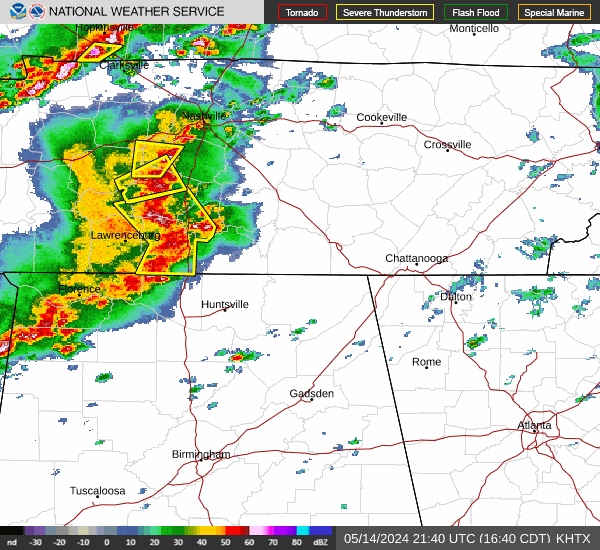
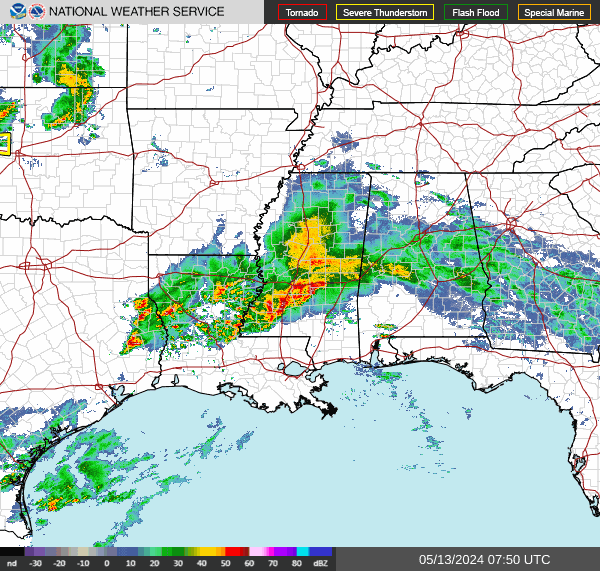










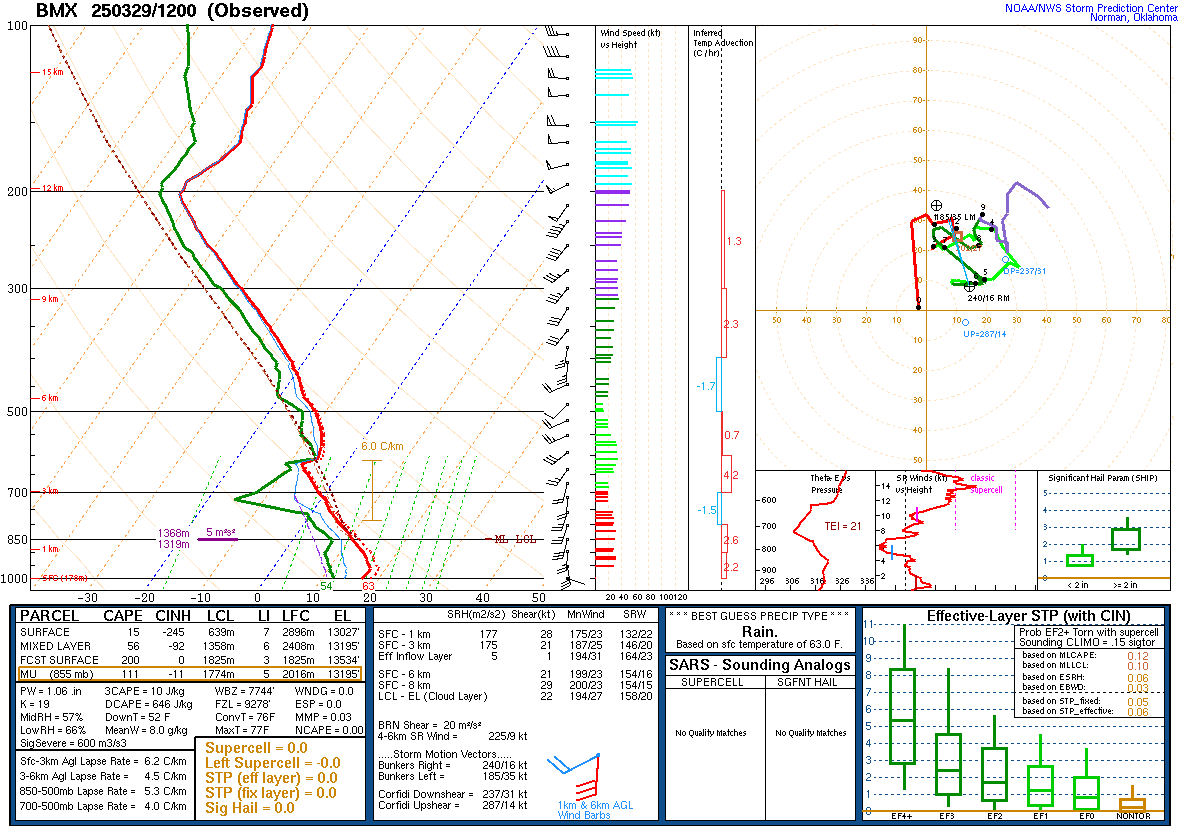





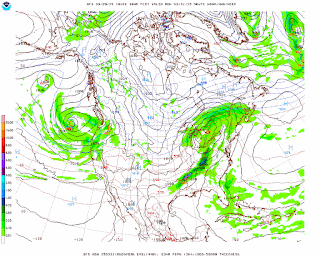









































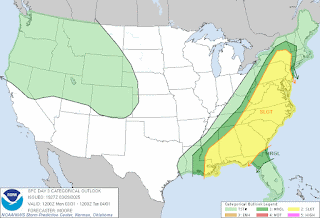





.png)

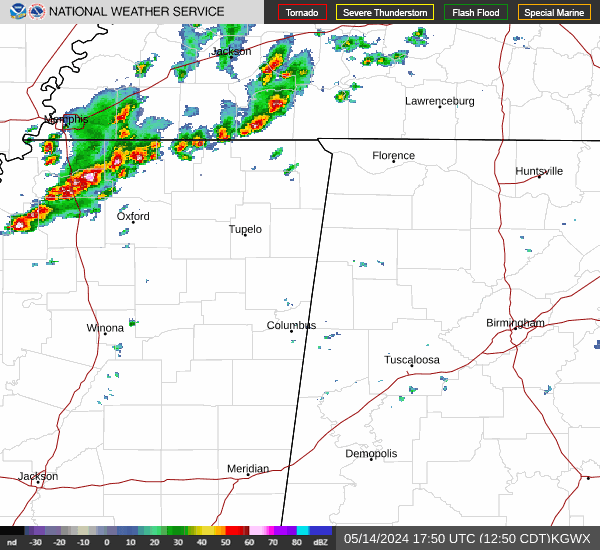
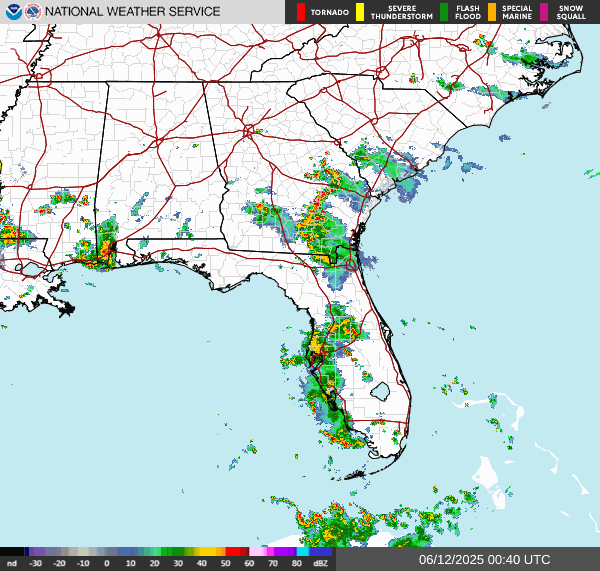





No comments:
Post a Comment